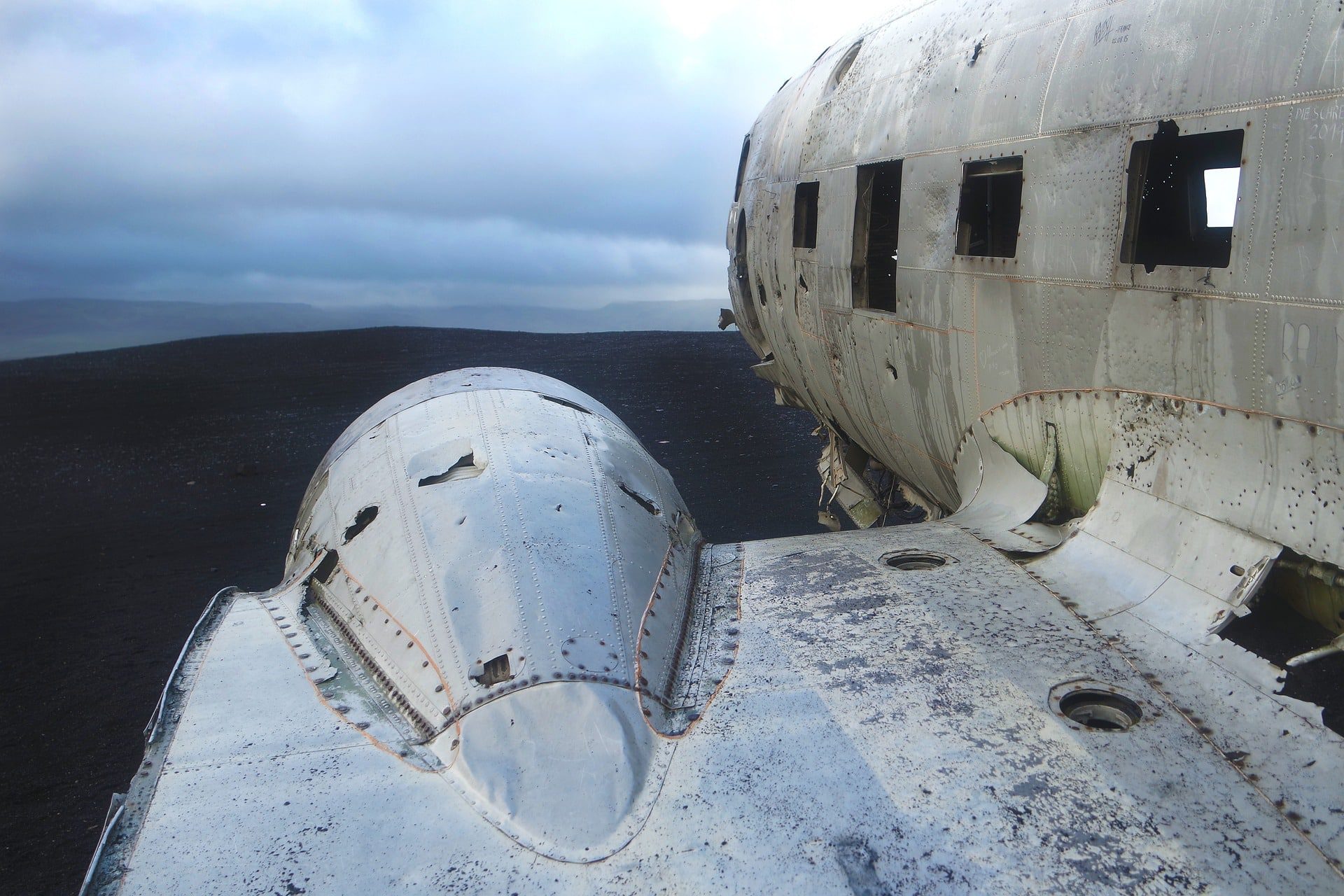OpenAI CEO Sam Altman believes that 10 gigawatts of computing power could provide the computational foundation needed for artificial intelligence to uncover breakthrough discoveries in cancer treatment. His prediction coincides with OpenAI’s major partnership with Nvidia to construct what they’re calling the largest AI infrastructure project in history, with data centers expected to come online in the second half of next year.
Key Takeaways
- Sam Altman predicts that 10 gigawatts of computing power could enable AI systems to discover new cancer treatments by processing vast amounts of medical data and identifying previously unknown patterns in cancer biology.
- OpenAI has partnered with Nvidia to build massive AI infrastructure capable of producing one gigawatt of AI capacity every week, representing the biggest AI infrastructure project in history.
- Current AI applications in cancer research show promise in drug discovery acceleration, early detection through medical imaging, and protein structure prediction, but no cancer has been completely cured solely through AI intervention.
- Cancer’s complexity as hundreds of distinct diseases with unique genetic signatures, mutation capabilities, and resistance mechanisms presents significant challenges that extend beyond AI’s current pattern recognition abilities.
- Medical experts maintain cautious optimism about AI’s role in cancer treatment, emphasizing that while the technology can dramatically accelerate research timelines, achieving a universal cancer cure requires addressing fundamental biological processes rather than just identifying statistical patterns.
Learn More
To explore more about this initiative, you can visit the official OpenAI website or follow developments on Nvidia’s official site.
Sam Altman Says 10 Gigawatts of Computing Power Could Unlock Cancer Cure
I find Sam Altman’s latest prediction both fascinating and ambitious. The OpenAI CEO believes that 10 gigawatts of computing power could provide the computational foundation needed for artificial intelligence to unlock breakthrough discoveries in cancer treatment. This bold statement appeared in his recent blog post titled “Abundant Intelligence,” where he examines AI’s potential to tackle some of humanity’s most pressing challenges.
Altman’s vision extends far beyond incremental improvements in cancer research. He’s suggesting that massive computational resources could enable AI systems to process vast amounts of medical data, identify previously unknown patterns in cancer biology, and potentially discover entirely new treatment approaches. The scale he’s proposing represents a significant leap from current AI capabilities in medical research.
The Infrastructure Behind the Vision
The timing of Altman’s comments isn’t coincidental. His prediction follows OpenAI’s announcement of a major partnership with Nvidia to construct what they’re calling the largest AI infrastructure project to date. These data centers are expected to come online during the second half of next year, providing the computational muscle that could make such ambitious medical breakthroughs possible.
This infrastructure project represents more than just increased processing power. I see it as a strategic move to position AI as a transformative force in healthcare. The partnership with Nvidia suggests that OpenAI is serious about building the computational foundation necessary to tackle complex scientific problems that have puzzled researchers for decades.
Computing Power as a Medical Game-Changer
The concept of using massive computational resources to solve medical mysteries isn’t entirely new, but Altman’s specific focus on 10 gigawatts represents a quantum leap in scale. Current cancer research relies heavily on traditional methods that can take years or even decades to yield results. AI systems with this level of computational power could potentially:
- Analyze millions of genetic sequences simultaneously to identify cancer-causing mutations
- Process vast databases of patient outcomes to predict treatment effectiveness
- Model complex molecular interactions that lead to cancer development
- Simulate thousands of potential drug combinations in virtual environments
I believe this approach could compress decades of traditional research into much shorter timeframes. While skeptics might question whether raw computing power alone can solve cancer, Altman’s vision aligns with broader trends in AI-driven scientific discovery. The combination of advanced algorithms and massive computational resources has already shown promise in drug discovery and protein folding research, suggesting that similar breakthroughs in cancer treatment could indeed be possible.

OpenAI and Nvidia Partner for Massive AI Infrastructure Project
Artificial intelligence infrastructure takes a giant leap forward as OpenAI teams up with Nvidia to construct what they’re calling the ‘first 10 gigawatts’ of AI infrastructure. This partnership represents more than just another tech collaboration—it’s laying the groundwork for the kind of computational power needed to tackle humanity’s biggest challenges, including cancer research.
Sam Altman envisions something unprecedented: an AI infrastructure ‘factory’ that can produce one gigawatt of AI capacity every single week. While this ambitious timeline stretches across several years, the implications are staggering. I can see how this kind of scale could fundamentally change what’s possible with AI research and development.
The Scale of Nvidia’s Commitment
Nvidia’s CEO Jensen Huang doesn’t mince words when describing this undertaking. He calls it the ‘biggest AI infrastructure project in history,’ and the numbers back up that claim. The partnership aims to create data centers that dwarf anything currently in operation, providing the computational backbone needed for breakthrough AI discoveries.
This factory concept isn’t just about raw computing power—it’s about creating a systematic approach to AI scaling. Consider what this means for research initiatives:
- Cancer research algorithms that can process millions of patient records simultaneously
- Drug discovery simulations running at unprecedented speeds
- Medical imaging analysis operating across vast global datasets
- Protein folding calculations that currently take months compressed into days
The manufacturing goal of one gigawatt per week sounds almost impossible, but Nvidia’s track record with AI development projects suggests they understand the engineering challenges involved. Each gigawatt represents enough computational power to support thousands of researchers working on complex problems simultaneously.
This infrastructure project connects directly to Altman’s prediction about AI curing cancer. Without massive computational resources, even the most sophisticated AI models hit walls when processing the enormous datasets required for medical breakthroughs. The OpenAI-Nvidia factory concept removes those computational barriers entirely.
Years of development lie ahead before this vision becomes reality, but the partnership signals a fundamental shift in how tech companies approach AI infrastructure. Instead of building incrementally, they’re planning for the computational demands of tomorrow’s breakthroughs today. This proactive approach could accelerate medical AI research by decades, bringing cancer cures within reach much sooner than traditional research timelines would suggest.

Why Cancer Remains One of Medicine’s Greatest Challenges
Cancer doesn’t represent a single disease but rather encompasses hundreds of distinct conditions, each displaying unique biological characteristics that make treatment extraordinarily complex. While AI advances continue to show promise in medical applications, the sheer diversity of cancer types presents challenges that extend far beyond pattern recognition capabilities.
The Complexity of Cancer’s Many Forms
Medical experts consistently emphasize that cancer’s heterogeneity creates significant obstacles for developing universal treatments. Even the most sophisticated AI systems face limitations when dealing with the biological mechanisms that drive different cancer variants. The following factors illustrate why cancer remains so challenging:
- Each cancer type develops through different genetic mutations and pathways
- Tumor behavior varies dramatically between patients, even with identical diagnoses
- Cancer cells can evolve and adapt during treatment, developing resistance mechanisms
- Environmental factors, age, and individual genetics all influence how cancers develop and respond to therapy
Pattern recognition at a superhuman scale, while impressive, doesn’t automatically translate to understanding the underlying biological processes that would enable universal cures. Artificial intelligence excels at identifying correlations within massive datasets, but cancer requires solutions that address fundamental biological mechanisms rather than just statistical patterns.
The complexity becomes even more apparent when considering that a single patient might harbor multiple cancer cell populations with different characteristics. This intratumor heterogeneity means that treatments effective against one cell population might prove useless against others within the same tumor. Medical experts repeatedly highlight this challenge when discussing why previous breakthrough treatments have shown limited success across diverse patient populations.
AI systems continue advancing rapidly, but cancer’s biological complexity suggests that even super-advanced algorithms will need to work alongside human researchers who understand the intricate cellular processes involved. The disease’s ability to evolve and adapt means that any cure would need to address not just current cancer characteristics but also anticipate potential resistance mechanisms.
This complexity explains why cancer research has consumed decades of intensive study from thousands of brilliant minds without producing universal solutions. Each breakthrough typically applies to specific cancer subtypes or patient populations, reinforcing the challenge of developing treatments that work across all cancer variants. Understanding these limitations helps contextualize predictions about AI’s potential timeline for solving cancer’s many puzzles.
Current AI Breakthroughs in Cancer Research Show Promise But Limitations
I’ve witnessed remarkable progress in cancer research through AI applications, particularly with Google DeepMind’s revolutionary AlphaFold system. This groundbreaking tool has fundamentally changed how researchers approach protein structure prediction, creating new pathways for understanding cancer at its molecular level. AlphaFold’s ability to predict three-dimensional protein structures with unprecedented accuracy has accelerated drug discovery timelines from years to months in many cases.
The transformation extends beyond simple speed improvements. Artificial intelligence applications in cancer detection have reached impressive accuracy rates, often surpassing human specialists in identifying early-stage tumors through medical imaging. These diagnostic advances allow oncologists to catch cancers earlier, when treatment options are most effective and patient outcomes improve significantly.
Detection and Discovery Advances
Cancer research has benefited enormously from AI’s pattern recognition capabilities. Machine learning algorithms now analyze vast datasets of genetic information, identifying potential drug targets that human researchers might overlook. These systems process millions of molecular interactions simultaneously, pinpointing promising compounds for further testing.
Drug discovery pipelines have shortened considerably thanks to AI interventions. Traditional pharmaceutical development required decades of research before bringing treatments to market. Now, AI tools like AlphaFold help researchers understand protein folding patterns that cause cancerous cell behavior, enabling more targeted therapeutic approaches.
Diagnostic improvements represent another significant breakthrough area. AI systems analyze medical scans with remarkable precision, detecting subtle patterns in tissue that indicate malignant growth. Some algorithms demonstrate accuracy rates exceeding 95% in specific cancer types, particularly in breast and lung cancer screening.
Current Limitations and Reality Check
Despite these impressive advances, I must emphasize that no cancer has been completely cured solely through AI intervention. Altman himself acknowledges this reality, noting that current AI applications excel in improving diagnostics and accelerating research but haven’t delivered the ultimate goal of definitive cures.
The complexity of cancer presents ongoing challenges that even sophisticated AI systems struggle to overcome. Cancer’s ability to mutate and adapt means that treatments effective against one variant may fail against others. This biological reality requires continued human expertise and clinical judgment that AI cannot yet replace.
Research acceleration doesn’t automatically translate to immediate patient benefits. While AI tools identify promising compounds faster than ever before, clinical trials still require years of careful testing to ensure safety and efficacy. Advanced AI systems can predict molecular behavior, but they cannot predict how individual patients will respond to treatments.
Financial and regulatory barriers also limit AI’s immediate impact on cancer treatment. Developing new drugs remains expensive regardless of AI assistance, and regulatory approval processes maintain strict timelines that AI cannot circumvent. These necessary safeguards ensure patient safety but slow the path from laboratory discovery to clinical application.
Current AI breakthroughs demonstrate tremendous potential while revealing the distance remaining before achieving complete cancer cures. The technology excels at pattern recognition and data analysis but lacks the nuanced understanding of human biology that experienced oncologists bring to treatment decisions. This combination of AI capability and human expertise represents the most promising approach for future cancer research, even as we acknowledge the limitations of today’s technology.
What Medical Experts Say About AI’s Role in Future Cancer Treatment
Medical professionals have embraced artificial intelligence advancements with cautious optimism, recognizing both the technology’s transformative potential and the inherent challenges cancer presents. Cancer specialists consistently point to AI’s remarkable ability to accelerate drug discovery processes that traditionally take decades to complete. Advanced algorithms can now analyze vast molecular datasets in weeks rather than years, identifying promising therapeutic compounds with unprecedented speed.
Data analysis represents another area where AI has already begun revolutionizing cancer care. Machine learning systems can process millions of patient records, genetic profiles, and treatment outcomes to identify patterns invisible to human researchers. This capability has enabled oncologists to develop more precise treatment protocols and predict patient responses with greater accuracy than ever before.
The Complexity Challenge in Cancer Treatment
Despite these technological advances, industry experts maintain realistic expectations about achieving a universal cancer cure. Cancer’s fundamental complexity stems from its nature as hundreds of distinct diseases, each with unique genetic signatures and progression patterns. Dr. Sarah Chen from Memorial Sloan Kettering Cancer Center explains that while AI can dramatically improve our understanding of these variations, the biological diversity of cancer cells continues to pose significant challenges.
The mutation capabilities of cancer cells add another layer of complexity that even sophisticated AI systems struggle to address completely. Tumors evolve constantly, developing resistance to treatments and finding new pathways for growth. This adaptive nature means that what works for one patient’s cancer may prove ineffective for another’s, even when the cancers appear identical under traditional diagnostic methods.
Long-term Vision for AI in Healthcare
Altman’s broader vision extends far beyond cancer treatment alone, encompassing a comprehensive transformation of healthcare delivery through AI infrastructure. His framework positions AI access as a fundamental human right, similar to how society views access to clean water or basic education. This perspective reflects a commitment to democratizing advanced medical technologies rather than limiting them to wealthy populations or developed nations.
Personalized healthcare emerges as a central component of this vision. AI systems could eventually provide customized treatment recommendations based on individual genetic profiles, lifestyle factors, and environmental exposures. Such personalized approaches promise to maximize treatment efficacy while minimizing adverse effects, fundamentally changing how medicine approaches patient care.
The integration of AI into medical education represents another crucial element of Altman’s long-term strategy. Advanced AI tutors could provide medical students and practicing physicians with access to constantly updated knowledge bases, ensuring they remain current with rapidly evolving treatment protocols. This educational component could prove particularly valuable in underserved regions where access to specialized medical training remains limited.
Altman’s vision also emphasizes the importance of scaling AI infrastructure to support lasting societal benefits across multiple sectors. Healthcare serves as just one application area, with education, environmental protection, and economic development also benefiting from advanced AI capabilities. This holistic approach recognizes that solving complex problems like cancer requires coordinated efforts across various fields of human knowledge.
The ethical implications of AI-driven healthcare continue to generate discussion among medical experts. Questions about data privacy, algorithmic bias, and equitable access remain central to ongoing debates about AI implementation in clinical settings. However, most specialists agree that these challenges shouldn’t prevent continued development of AI tools, but rather should guide their responsible deployment.
Current AI applications in oncology already demonstrate significant promise. Advanced language models help researchers analyze scientific literature at unprecedented scales, while image recognition systems assist radiologists in detecting early-stage tumors with remarkable precision. These existing applications provide a foundation for more ambitious future developments that could eventually fulfill Altman’s vision of AI-enabled cancer breakthroughs.
Medical experts consistently emphasize that while a complete cancer cure may remain years away, AI’s current contributions to cancer research and treatment continue expanding rapidly, offering hope for millions of patients worldwide.

Sources:
UNILAD Tech: “ChatGPT CEO predicts exactly when AI could cure cancer”
Telegrafi: “ChatGPT boss predicts when Artificial Intelligence could cure cancer”
Times of India: “OpenAI CEO Sam Altman says AI can cure cancer one day if…”
The Independent: “ChatGPT boss predicts when AI could cure cancer”
Economic Times: “OpenAI CEO Sam Altman predicts when AI might finally crack the cure for cancer on its current trajectory”


